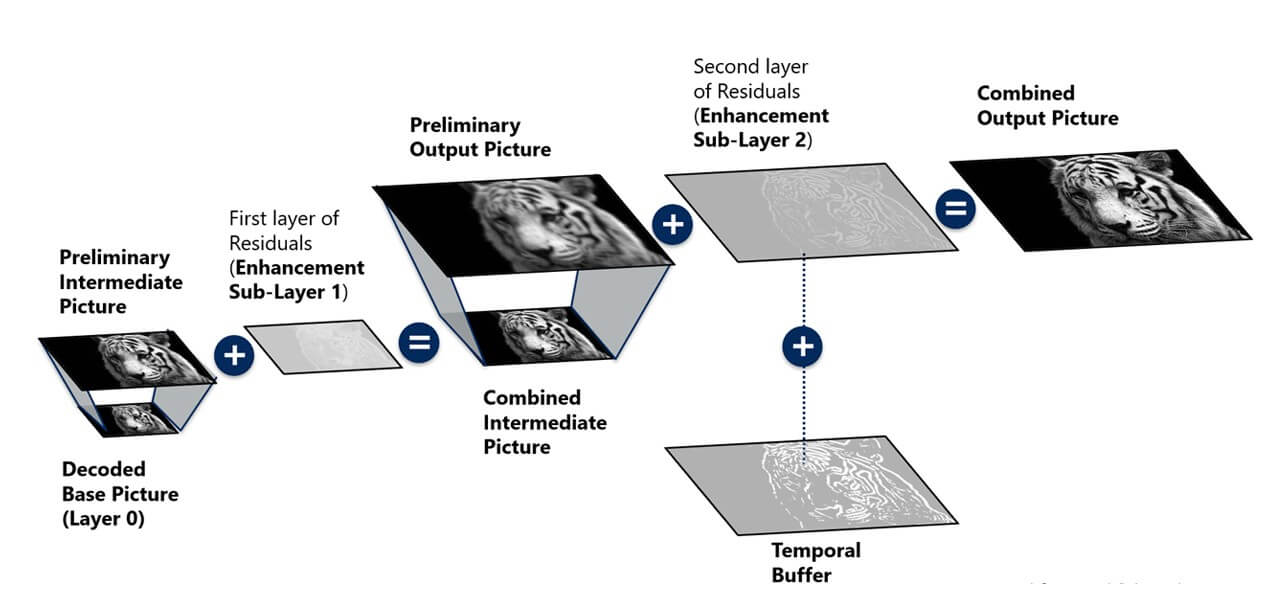Something to look forward to: Video data is expected to account for over 82 percent of the global Internet traffic by 2022, and with the proliferation of 4K and 360-degree video, better video codecs are needed to reduce the bandwidth and space requirements of your favorite content. That's where Versatile Video Coding (VVC) comes in, which is able to achieve the same subjective quality as HEVC at only half the bitrate.
The Moving Pictures Expert Group has three different video codecs lined up for release this year: Low Complexity Enhancement Video Coding (LCEVC), Essential Video Coding (EVC), and Versatile Video Coding (VVC).
The first is part of the MPEG-5 standard and is designed for live streaming on services like YouTube and Twitch. To that end, LCEVC acts as an add-on codec that takes an existing one like AVC or HEVC and improves the encoding speed. It does so by taking a base image encoded at a lower resolution and adding detail and sharpness by combining that with two layers of encoded residuals. Preliminary tests also showed improvements in decoding efficiency, which could lead to better battery life on mobile devices.

Essential Video Coding is presented as an alternative to AVC (H.264) and HEVC (H.265), but it really is more of a workaround to the overly complicated and broken licensing structure of the latter codec. EVC simplifies things with a baseline profile that's based on royalty-free technology and a mainline profile that will incur licensing costs. The first should offer bitrate savings of around 31 percent when compared to AVC and the second should achieve similar image quality to HEVC Main 10 with a 26 percent lower bitrate.
The most interesting of the three new codecs by far is VVC, which is also known as MPEG-I Part 3 or H.266. According to the Fraunhofer Heinrich Hertz Institute, who penned the official announcement today, it's the result of ten years of research and development backed by companies like Apple, Intel, Microsoft, Qualcomm, Huawei, Ericsson and Sony.
At least on paper, VVC should offer the same visual fidelity as HEVC (H.265) with around 50 percent of the bitrate, which will lead to significant storage and bandwidth savings. Keep in mind that this new codec was made with ultra high definition (4K and 8K) and 360-degree video content in mind, so the efficiency gains are smaller for lower resolution video.
However when compared to the royalty-free AV1, VVC sounds a little less impressive. For one, AV1 is already around 30 percent better than HEVC, and doesn't come with royalty expenses, while VVC is encumbered by patents – this is why companies like Netflix have already started using the former to serve content to Android devices. More importantly, web browsers like Firefox and Chrome already support AV1.
Hardware decode support is well underway for AV1, while the first software decoder (and associated encoder) for VVC is expected this fall at the earliest. One thing we still don't know is how much compute power is required to encode videos using VVC, but neither HEVC not AV1 are particularly easy to use without powerful hardware. Preliminary tests show that VVC is anywhere between four to ten times more complex to encode when compared to HEVC.
Ultimately, the success of the new VVC codec will largely depend on how many organizations decide that its efficiency improvements are better than AV1's simple, royalty-free licensing. Leonardo Chiariglione, who is the co-founder and former chairman of the Moving Picture Experts Group, doesn't think VVC (or EVC and LCEVC, for that matter) will see a better adoption rate than HEVC unless patent holders can "get their acts together."
